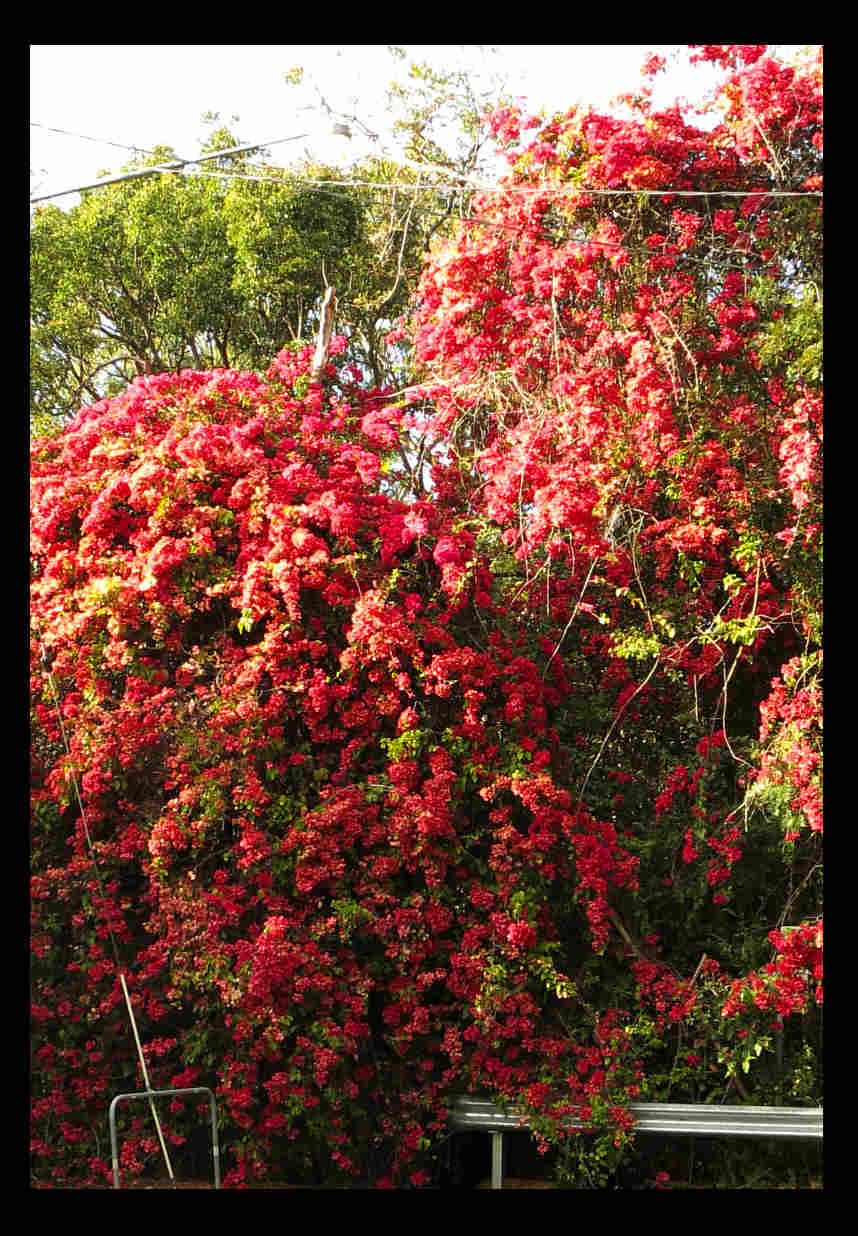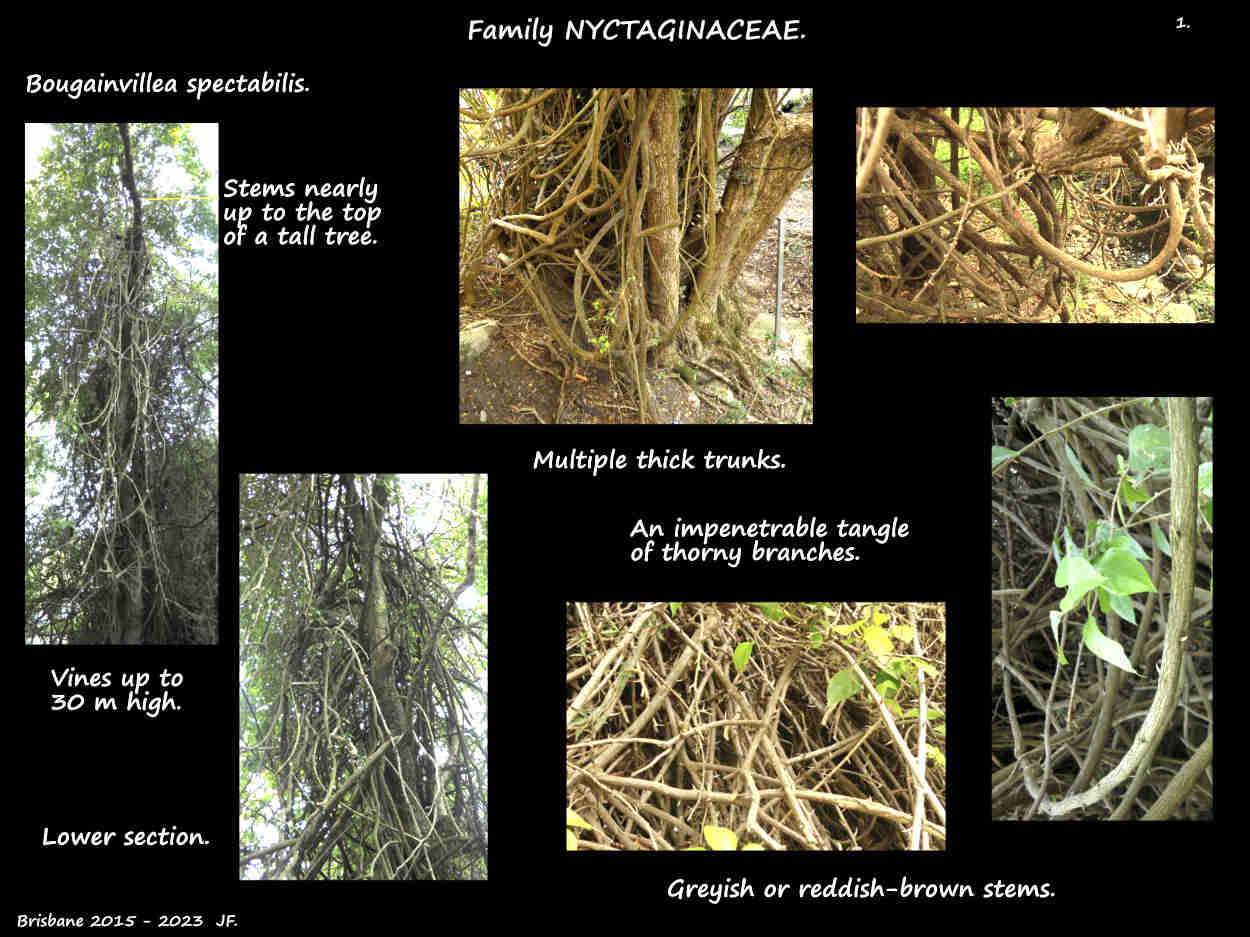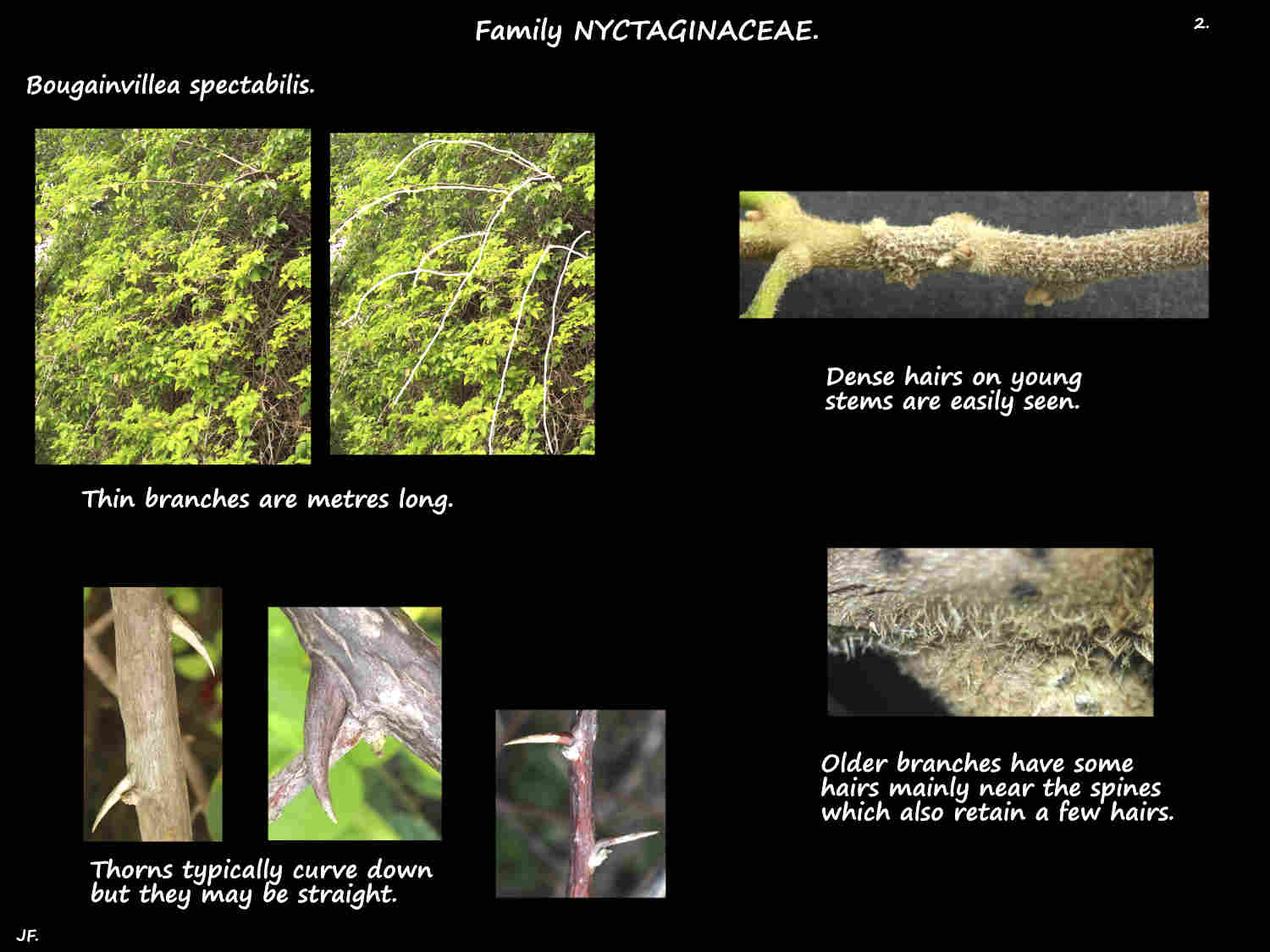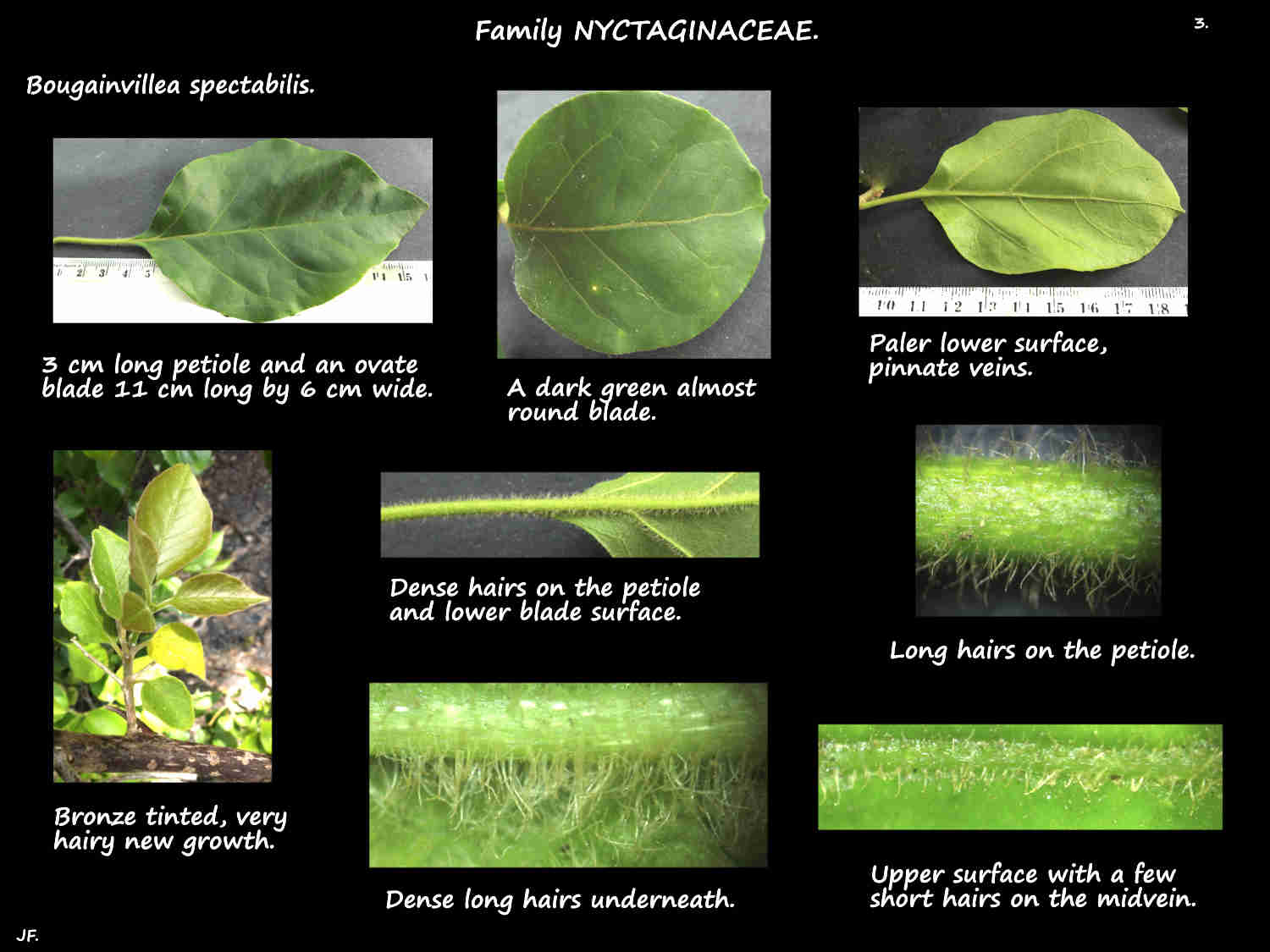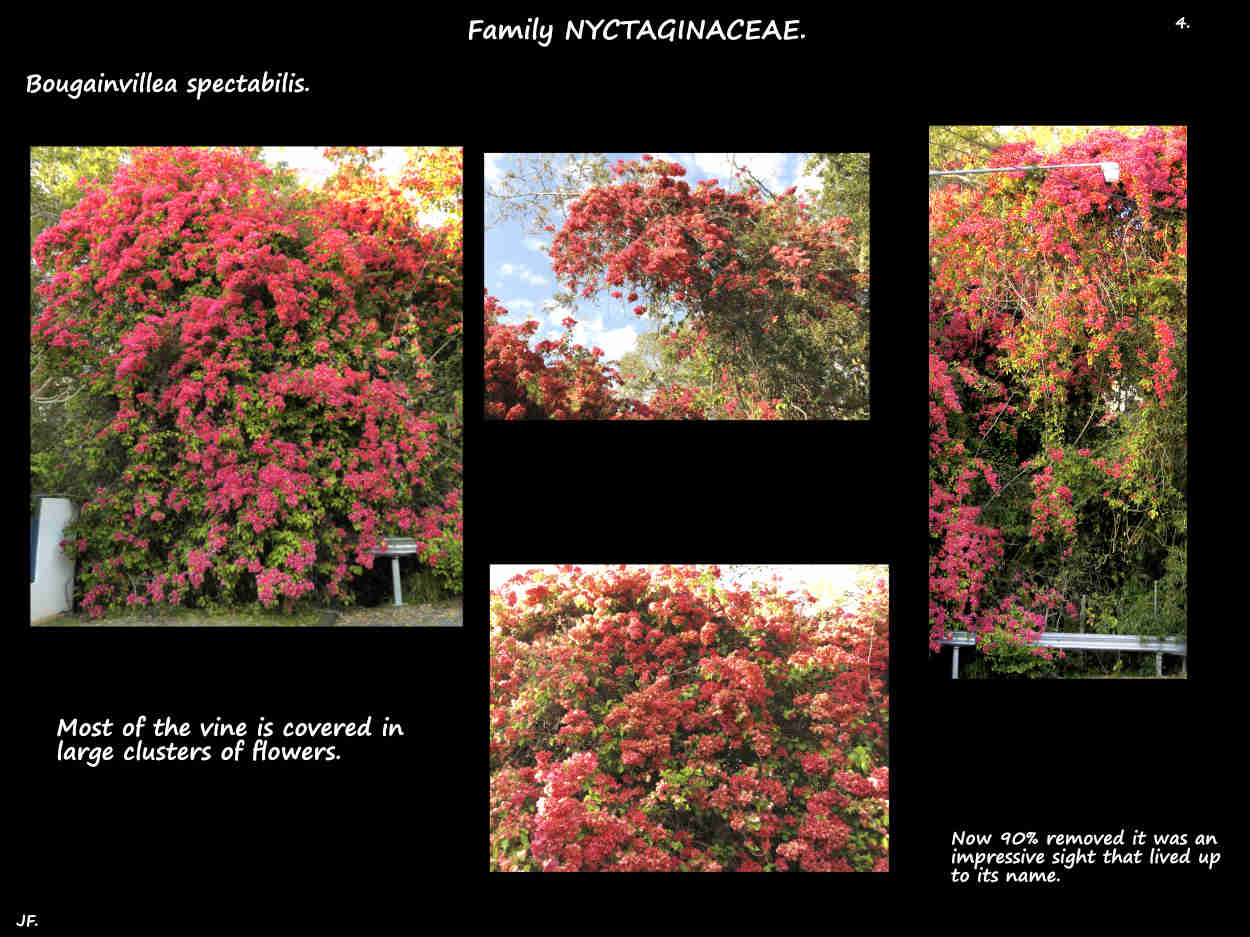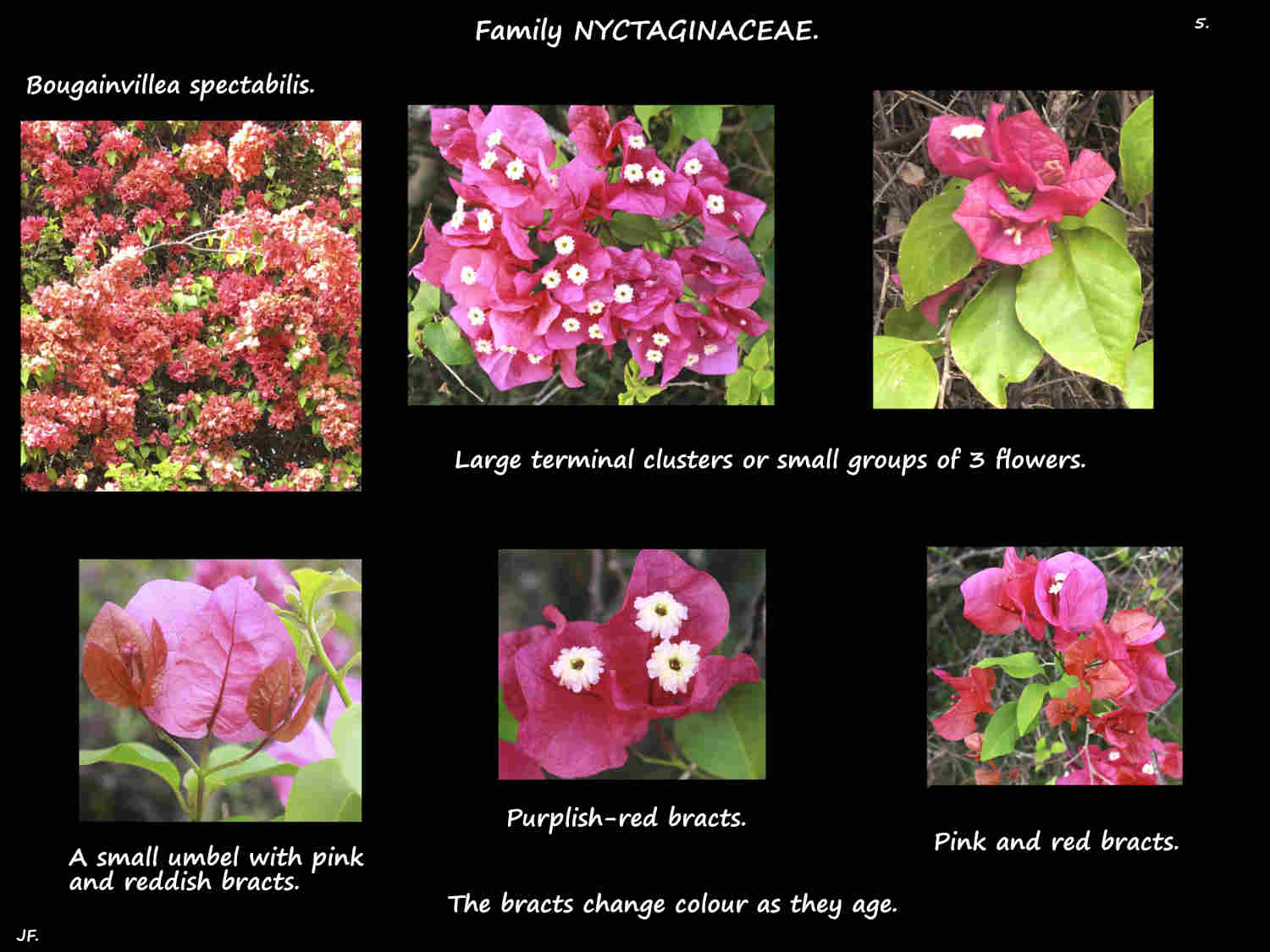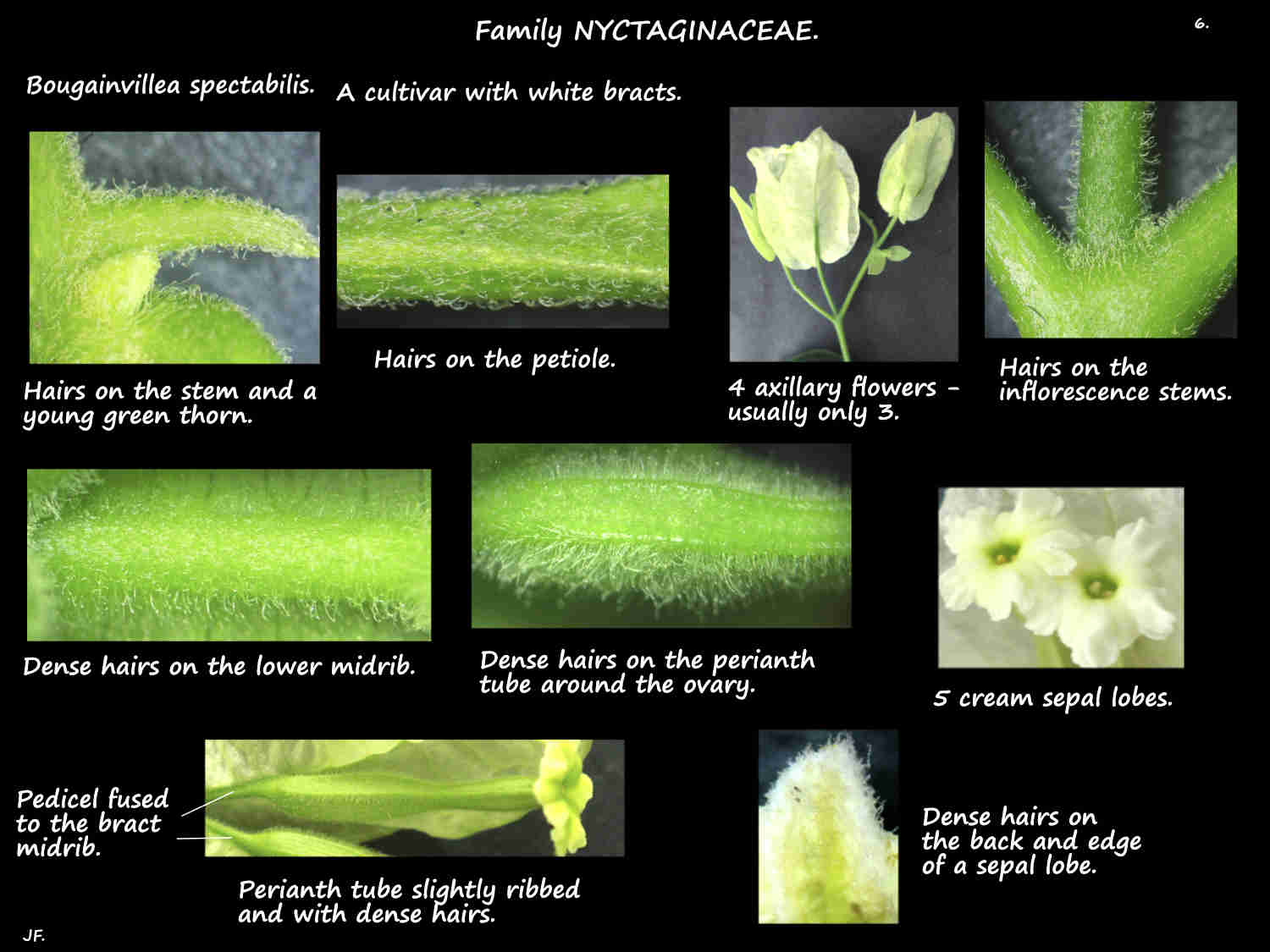Bougainvillea spectabilis.
Great# Bougainvillea is a dense shrub, small tree or more commonly a woody vine.
Vines, up to 30 m high have long thin reddish-brown or greyish stems.
The thick sharp woody axillary thorns are usually curved down but may be occasionally be straight.
The up to 4 or 5 cm long thorns and the stems have dense soft hairs that may wear off over time.
Plants climb by clambering over other vegetation using their stems and thorns for support.
The dark green alternate leaves are on hairy petioles from 1.5 to 3 cm long.
The round to ovate or slightly elliptic leaves are up to around 10 cm long and 6 cm wide.
The tip can be rounded, a narrow blunt tip or a short pointed one.
The rounded or wedge-shaped base may run down the petiole.
The base may be slightly asymmetric and the edge is smooth and wavy.
The midrib and veins on the lower surface have dense long fine hairs.
The upper surface has a few or no hairs.
Inflorescences are large clusters of flowers in the leaf axils or terminal.
At the base of each flower is a large thin bract around 2 to 6 cm long by 3 to 4 cm wide.
They are widely ovate to cordate (heart-shaped) with a few short hairs on the veins on the outer surface.
They are purple, pink or dark red but cultivars add white plus orange, yellow, apricot, blue and more shades of purple and red.
The flowers are on stalks (pedicels) that are fused to the midrib of their bract.
The bisexual flowers have no petals just 5 petal-like sepals.
The fused sepal bases form a narrow tube up to 2.5 cm long with constrictions at the top and above the ovary.
The tube, with faint or no ribs is covered in short hairs.
There are 5 (4, 6) spreading cream lobes around 3 mm long with a yellow throat.
There are dense hairs, up to 1 mm long on the edge and outer surface of the lobes.
There are 8 (5 to 10) stamens with the base of the filaments fused into a short tube.
The filaments are of different lengths but the anthers all lie within the tube.
The ovary is on a stalk.
It has a single locule with one ovule but fruit do not develop on cultivated plants.
The short style has a linear stigma with tiny papillae on one side to collect pollen.
There are a number of cultivars including double flowers with the stamens and ovary replaced by whorls of bracts.
# Great is compared to the Lesser Bougainvillea (B. glabra) which is a smaller vine with curved thorns,
few or no hairs and smaller purple or magenta bracts.
J.F.
